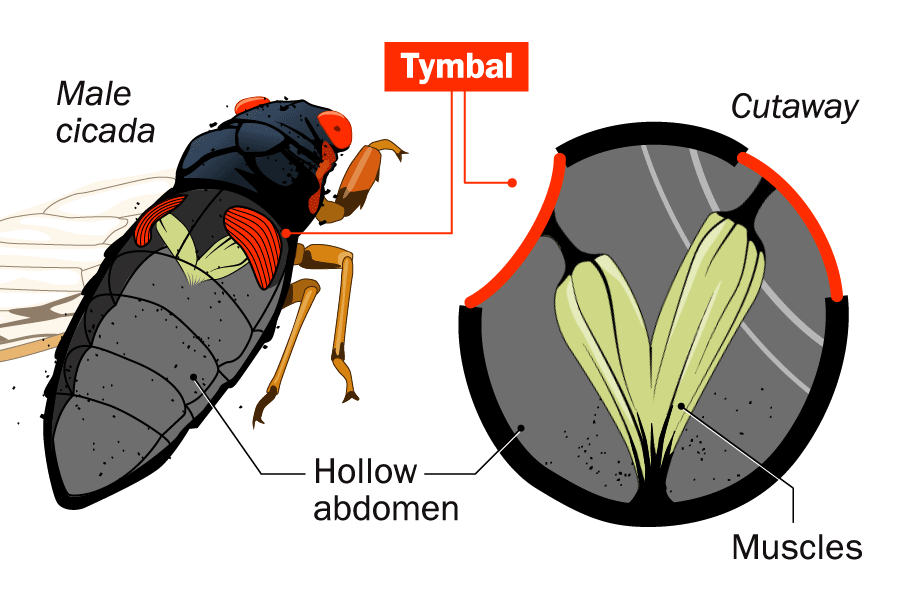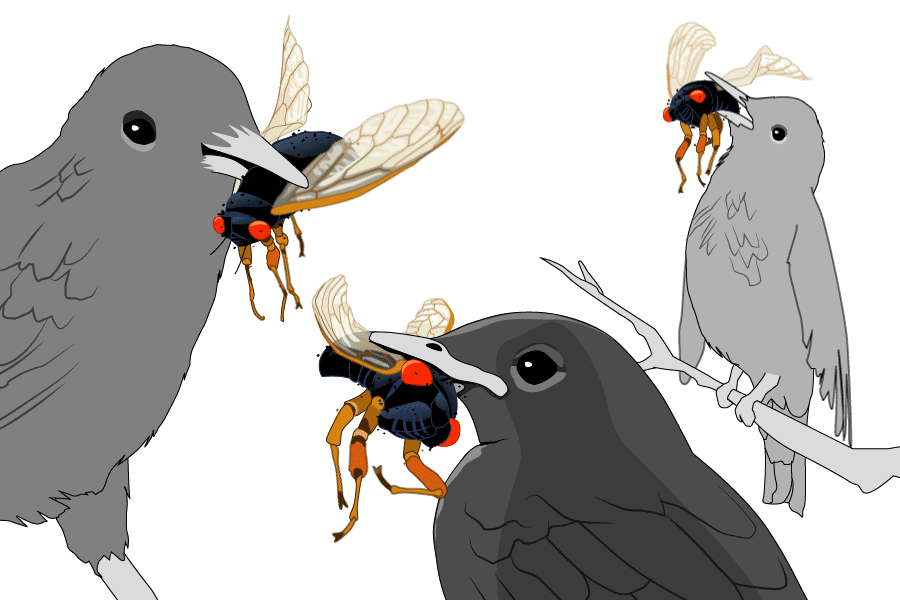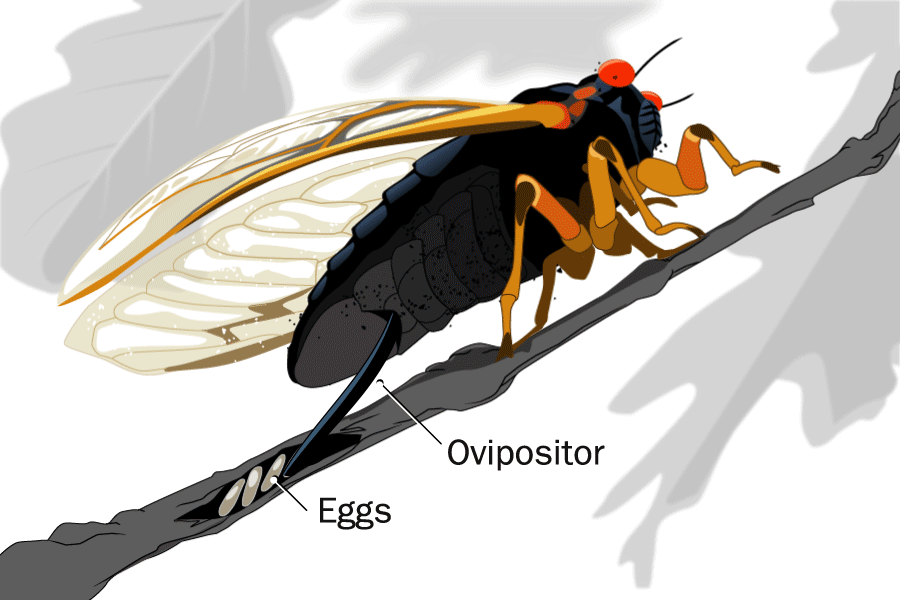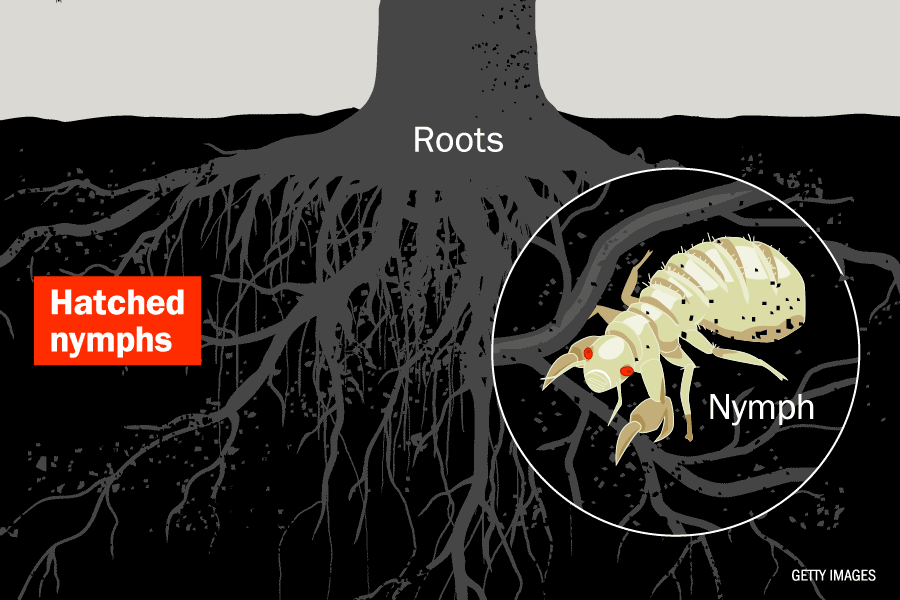MMore than a trillion noisy, centimeter-long cicadas are expected to emerge from underground this spring to embark on the final stage of their lives, in a massive co-emergence not seen in more than 200 years.
The cicadas that are part of a 13- and 17-year-old brood will emerge at the same time this spring. It will be the first time since 1803 – when Thomas Jefferson was president – that these particular broods have simultaneously emerged from their burrows to find a mate and make way for the next generation of cicadas.
Cicadas will be visible in several states, including Iowa, Illinois, Georgia, Tennessee and others. But you don’t have to worry about your neighborhood being inundated with greater numbers of cicadas than in previous years; the two broods live in different regions – Brood XIII in the north and Brood XIX in the south – according to the University of Connecticutmeaning people are unlikely to witness both litters at the same time.
Here’s an animated look at what will happen in the emergence of Brood XIX and Brood XIII.
Cicada nymphs emerge
When the soil temperature near the cicadas’ home reaches about 64 degrees Fahrenheit or higher, the insects begin to climb through the exit holes.
Time to change
That same night, the cicadas transform from nymphs, or their sexually immature stage, into adults. Cicadas assume their new form, shedding their final exoskeleton. (The species has already gone through this elimination process four times while living underground, according to Arizona State University.)

Your exoskeleton hardensIt is
Cicadas must keep a low profile in the hours after molting to avoid being eaten by predators while their new exoskeleton hardens. Afterwards, they begin looking for partners to reproduce in a ritual that will take place six to 10 days later.

Buzz calls for companions
Male cicadas are known for their deafening mating call, which in 2021 reached 90 to 100 decibels, according to the Centers for Disease Control and Prevention (CDC). The sound is caused by the vibration of the tymbal, an organ located on the side of the abdomen. Because cicadas emerge all at once, their sound is difficult to miss, but the CDC advises people not to worry. The sound no cause hearing loss because other factors such as noise duration and exposure distance must be taken into consideration.

Predators feed on insects
Various predators – birds, bears, fish, raccoons, turtles and even some humans – love to eat cicadas, which are in the same family as stink bugs. Although many die as a tasty snack, the number of cicadas that will emerge is so great that predators will not cause a significant dent in their population.

Females lay their eggs
After mating, female cicadas use their ovipositor – a spear-like structure – to cut down small trees, bushes and even vines. It allows the insect to make small slits in branches or branches and lay nests with dozens of eggs at a time. (This process does not cause any serious harm to the plant.) Females lay 400 to 600 eggs before they begin to die and their bodies become fertilizer for the soil around them.

Nymphs hatch from the eggs
Six to eight weeks after the eggs are laid, the nymphs hatch and fall to the ground. The tiny nymphs then burrow down to the roots of the plant, where they will live for the next 13 or 17 years, depending on the type of litter.

It’s a regional issue
Periodical cicadas will emerge in more than 10 states this spring, but their habitat extends across the eastern and midwestern US. Brood XIX is geographically the largest of all litters, living from Maryland to Georgia and from Iowa to Oklahoma. The next appearance will take place in 2025, with Brood XIV.

This story originally appeared on Time.com read the full story
























/cdn.vox-cdn.com/uploads/chorus_asset/file/25512791/Screenshot_2024_06_30_at_4.37.29_PM.png?w=300&resize=300,300&ssl=1)










